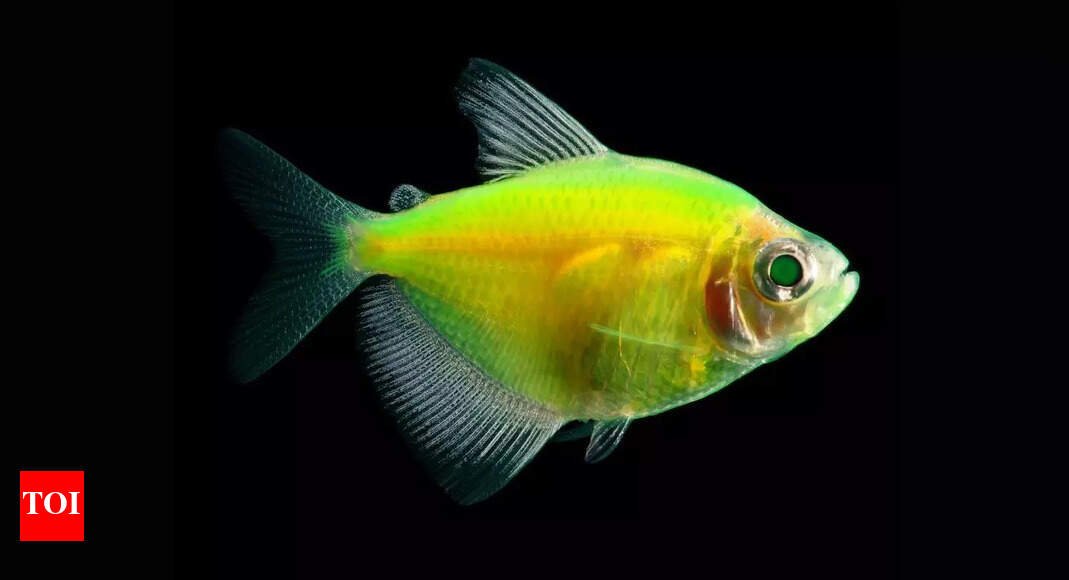Researchers have mapped biofluorescence across 459 species, revealing the incredible diversity of colours. By analysing every known case of glowing bony fish and adding 48 new species to the list, the team found that biofluorescence first emerged in ancient eels and has since evolved independently over 100 times. According to earth.com, the study published in PlosOne sheds light on the fascinating history and variety of biofluorescence in fish, transforming our understanding of the life beneath the waves. Biofluorescent fish have been radiant underwater for at least 112 million years. These fish absorb blue light and emit it back out, in the incredible forms of green, yellow, orange, or red when exposed to it. A swirl of colour, biofluorescence happens without us noticing, because humans experience light during the day and with very specific lighting.
How coral reefs accelerate the evolution of biofluorescent fish
Following the mass extinction event 66 million years ago, when reefs began to rebound, biofluorescent species rapidly multiplied, exploiting new habitats and ecological niches. Coral reefs now appear to accelerate the evolution of biofluorescence in fish, with reef-dwelling species acquiring this trait about ten times faster than those in open water. Research using museum specimens under special lights revealed remarkable diversity, with some families displaying at least six distinct peaks of fluorescence, far surpassing previous documentation and highlighting the vibrant complexity of life on coral reefs.
Methods for fluorescence imaging of marine fishes
Fluorescence imaging was conducted using live or freshly frozen specimens placed in a photographic tank, with imaging performed before freezing. Fluorescence remains stable over time when specimens are promptly frozen. Imaging was carried out in a dark room using DSLR and mirrorless cameras with macro lenses, blue excitation filters, and long-pass emission filters to capture only emitted fluorescence. Different LP filters (514 nm and 561 nm) were used to isolate specific fluorescence wavelengths, with full imaging details provided in the supplementary material
Future research
Researchers observed significant variation in fluorescence emission spectra not only among families and genera but even within individual fish. This diversity suggests the presence of a complex and potentially species-specific signaling system based on fluorescent patterns. Such variation could be valuable in taxonomic research, aiding in species identification and revealing hidden diversity. To better understand this phenomenon, further studies are needed to explore the visual capabilities of more fluorescent species, isolate the molecules responsible, and investigate the ecological and evolutionary roles of biofluorescence.Also read | Astronomers discover high-altitude clouds darkening skies in YSES-1 system
var _mfq = window._mfq || [];
_mfq.push([“setVariable”, “toi_titan”, window.location.href]);
!(function(f, b, e, v, n, t, s) {
function loadFBEvents(isFBCampaignActive) {
if (!isFBCampaignActive) {
return;
}
(function(f, b, e, v, n, t, s) {
if (f.fbq) return;
n = f.fbq = function() {
n.callMethod ? n.callMethod(…arguments) : n.queue.push(arguments);
};
if (!f._fbq) f._fbq = n;
n.push = n;
n.loaded = !0;
n.version = ‘2.0’;
n.queue = [];
t = b.createElement(e);
t.async = !0;
t.defer = !0;
t.src = v;
s = b.getElementsByTagName(e)[0];
s.parentNode.insertBefore(t, s);
})(f, b, e, ‘https://connect.facebook.net/en_US/fbevents.js’, n, t, s);
fbq(‘init’, ‘593671331875494’);
fbq(‘track’, ‘PageView’);
};
function loadGtagEvents(isGoogleCampaignActive) {
if (!isGoogleCampaignActive) {
return;
}
var id = document.getElementById(‘toi-plus-google-campaign’);
if (id) {
return;
}
(function(f, b, e, v, n, t, s) {
t = b.createElement(e);
t.async = !0;
t.defer = !0;
t.src = v;
t.id = ‘toi-plus-google-campaign’;
s = b.getElementsByTagName(e)[0];
s.parentNode.insertBefore(t, s);
})(f, b, e, ‘https://www.googletagmanager.com/gtag/js?id=AW-877820074’, n, t, s);
};
function loadSurvicateJs(allowedSurvicateSections = []){
const section = window.location.pathname.split(‘/’)[1]
const isHomePageAllowed = window.location.pathname === ‘/’ && allowedSurvicateSections.includes(‘homepage’)
const ifAllowedOnAllPages = allowedSurvicateSections && allowedSurvicateSections.includes(‘all’);
if(allowedSurvicateSections.includes(section) || isHomePageAllowed || ifAllowedOnAllPages){
(function(w) {
function setAttributes() {
var prime_user_status = window.isPrime ? ‘paid’ : ‘free’ ;
var geoLocation = window?.geoinfo?.CountryCode ? window?.geoinfo?.CountryCode : ‘IN’ ;
w._sva.setVisitorTraits({
toi_user_subscription_status : prime_user_status,
toi_user_geolocation : geoLocation
});
}
if (w._sva && w._sva.setVisitorTraits) {
setAttributes();
} else {
w.addEventListener(“SurvicateReady”, setAttributes);
}
var s = document.createElement(‘script’);
s.src=”https://survey.survicate.com/workspaces/0be6ae9845d14a7c8ff08a7a00bd9b21/web_surveys.js”;
s.async = true;
var e = document.getElementsByTagName(‘script’)[0];
e.parentNode.insertBefore(s, e);
})(window);
}
}
window.TimesApps = window.TimesApps || {};
var TimesApps = window.TimesApps;
TimesApps.toiPlusEvents = function(config) {
var isConfigAvailable = “toiplus_site_settings” in f && “isFBCampaignActive” in f.toiplus_site_settings && “isGoogleCampaignActive” in f.toiplus_site_settings;
var isPrimeUser = window.isPrime;
var isPrimeUserLayout = window.isPrimeUserLayout;
if (isConfigAvailable && !isPrimeUser) {
loadGtagEvents(f.toiplus_site_settings.isGoogleCampaignActive);
loadFBEvents(f.toiplus_site_settings.isFBCampaignActive);
loadSurvicateJs(f.toiplus_site_settings.allowedSurvicateSections);
} else {
var JarvisUrl=”https://jarvis.indiatimes.com/v1/feeds/toi_plus/site_settings/643526e21443833f0c454615?db_env=published”;
window.getFromClient(JarvisUrl, function(config){
if (config) {
const allowedSectionSuricate = (isPrimeUserLayout) ? config?.allowedSurvicatePrimeSections : config?.allowedSurvicateSections
loadGtagEvents(config?.isGoogleCampaignActive);
loadFBEvents(config?.isFBCampaignActive);
loadSurvicateJs(allowedSectionSuricate);
}
})
}
};
})(
window,
document,
‘script’,
);
#Heres #fish #started #glowing #million #years



